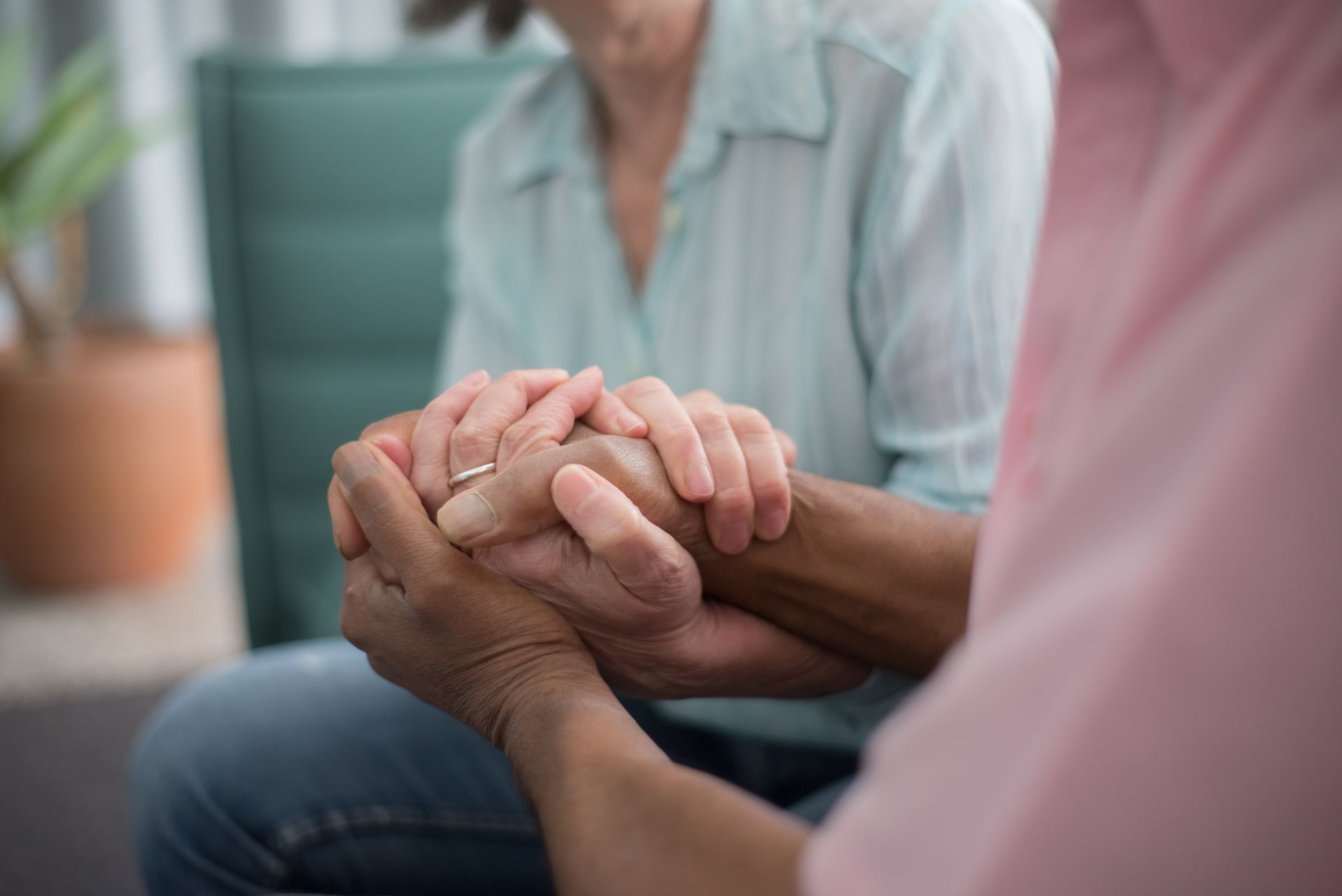Our Blog
We hope that you find the following information useful.

As a therapist, I often find myself sitting across from individuals grappling with the raw, unsettling reality of suffering. It’s an undeniable aspect of the human condition, isn't it? Whether it emerges from the searing pain of loss, the relentless grip of illness, the sting of injustice, or the quiet battles waged within our own hearts, suffering has a way of leaving us feeling adrift, hopeless, and questioning the very fabric of our existence. In my practice, I’ve witnessed countless times how people search for a beacon of meaning in these darkest of hours. And what a privilege it is to walk alongside them, guiding them not only with the insights of modern psychology but also with the profound wisdom of our Catholic faith, drawing upon the transformative power of the Cross. The Therapist’s Lens: Holding Space for Pain and Cultivating Meaning When someone walks into my office, burdened by suffering, my first and most sacred task is to simply be there . To create a safe, supportive space where they can unpack the heavy emotional and psychological impact of what they're enduring. It's a space free of judgment, where tears are welcome, and anger, fear, and despair can be expressed without shame. In the world of therapy, we have a number of powerful approaches that specifically address these deep questions of meaning and purpose in the face of adversity. Take, for instance, Existential Therapy . This approach, at its heart, is about helping individuals confront the inherent anxieties of existence – the big questions about life, death, freedom, isolation, and meaning. It doesn’t shy away from the harsh realities of suffering but rather encourages clients to lean into these experiences, to find agency and responsibility in their response (Yalom, 1980). We explore their values, asking: "What truly matters to you? What principles guide your life, especially when things are falling apart?" It’s in identifying these core values that a sense of purpose can begin to emerge, even amidst the chaos. Then there's Meaning-Centered Psychotherapy, which builds directly on these ideas. Here, the focus is more explicitly on helping individuals discover or rediscover sources of meaning in their lives. This isn't about imposing meaning; it's about helping the person unearth what genuinely resonates with their spirit. It might be through creative expression, service to others, cultivating relationships, or simply by the attitude they choose to adopt in the face of unavoidable suffering (Frankl, 2006). We work on developing coping strategies that don't just numb the pain but actively foster resilience. We learn to sit with discomfort, to process grief in all its messy stages, to manage chronic pain, and to find ways to adapt to circumstances that may never fully resolve. As a therapist, I see my role as an illumination – shining a light on the pathways to healing and adaptation. We explore past wounds, identify unhelpful thought patterns, and build healthier emotional regulation skills. It's about empowering the individual, helping them to find their own internal resources and strengths to navigate their journey. But for me, as a Catholic, there's always another layer, a deeper truth that informs my understanding of suffering. The Catholic Heart: The Transformative Power of the Cross This is where the profound beauty of our Catholic faith truly comes into play. While therapy provides invaluable tools for how to cope, Catholicism offers a unique, profound perspective on why we suffer and what purpose that suffering can ultimately serve. It’s through the lens of the Cross that we begin to understand. Think of Jesus Christ. He, who was innocent, blameless, and divine, willingly embraced suffering, humiliation, and death. And He did it not because suffering is inherently good, but out of an unfathomable, redemptive love for humanity. His Passion and Death weren't just a historical event; they were a profound act of self-giving that fundamentally transformed suffering itself. It shifted it from a seemingly meaningless burden into a potential source of redemption, a path to deeper union with God (Catechism of the Catholic Church, 1997). I often share with my clients the words of St. Paul from his Letter to the Romans (5:3-5), words that resonate so deeply with the Christian experience: "And not only so, but we glory also in tribulations, knowing that tribulation worketh patience: And patience, experience; and experience, hope: And hope confoundeth not: because the charity of God is poured forth in our hearts, by the Holy Ghost, who is given to us. (Romans 5:3-5, Douay-Rheims translation). This isn't a call to masochism, nor does it mean we should ever seek out pain. Our God is a God of love, and He desires our flourishing, not our misery. The Catholic understanding of "redemptive suffering" means that when we, in our humility and faith, unite our own trials with Christ’s suffering on the Cross, our difficulties can take on a new, sacred meaning and purpose (Pope John Paul II, 1984). This union can manifest in many ways. It might involve offering our struggles, our headaches, our disappointments, our grief, or our chronic pain for the intentions of others – for the souls in purgatory, for a sick friend, for a struggling family member, for the salvation of the world. It’s a profound act of love, turning our own suffering outwards in solidarity with others and with Christ. Through this process, we often find ourselves growing in unexpected ways. We cultivate compassion and empathy for those who also suffer, recognizing our shared humanity. We become less self-absorbed and more attuned to the needs of others. Our faith deepens as we lean more heavily on God's grace, realizing our own limitations and His boundless strength. It’s a paradox: in embracing our weakness and vulnerability, we find true spiritual strength. Echoes of Hope: The Lives of the Saints Sometimes, when a client feels utterly overwhelmed and questions how anyone could possibly endure what they are experiencing, I turn to the stories of the saints. Their lives are powerful testaments to the human capacity for finding profound meaning in the midst of unimaginable trials. Consider the unwavering faith of St. Thérèse of Lisieux , who endured profound spiritual darkness and physical suffering in her final years, yet clung to her "little way" of love and trust, offering every discomfort to God. Or St. Padre Pio , who bore the visible wounds of Christ in the stigmata, living a life of constant physical pain yet pouring out spiritual guidance and healing to countless souls. Think of St. Maximilian Kolbe , who offered his life in exchange for another in a concentration camp, an ultimate act of self-giving love rooted in his faith. These aren't just historical figures; they are companions on our journey. Their stories remind us that even in the darkest valleys, God’s grace is sufficient to sustain us. They show us that suffering, when united with Christ, can indeed become a crucible for holiness, bringing forth spiritual growth and a deeper union with God that transcends earthly understanding. Their lives offer a profound witness to the truth that suffering, while never desired, can be transformed into a source of enduring hope. Weaving the Threads: Therapy and Faith in Harmony So, how do I, as a Catholic therapist, weave these threads together in my practice? It’s not about choosing one over the other, but rather seeing them as complementary paths leading to holistic healing and deeper meaning. When a client is experiencing intense grief, for example, we'll use therapeutic techniques to process the emotions: validating their sadness, acknowledging the pain of loss, and helping them develop healthy coping mechanisms. We might explore the stages of grief, identify triggers, and work on rebuilding a life after loss. But alongside this, if they are open to it, we can explore the spiritual dimension of their grief. We can talk about the hope of resurrection, the communion of saints, and how their love for the departed can continue, transformed by prayer and intercession. We can explore how God is present even in the deepest sorrow, holding them in their pain. Similarly, if someone is struggling with chronic illness and the limitations it imposes, therapy can help them adjust to their new reality, manage frustration, and prevent isolation. We can work on cognitive reframing – changing negative thought patterns – and finding new ways to engage with life and purpose. From a Catholic perspective, we can also discuss how their illness, though difficult, can be offered as a prayer, how it can be a means of drawing closer to Christ in His suffering, and how it can be a source of grace for others. We can explore the idea of finding joy in small moments, of radiating peace even amidst discomfort, and of trusting in God's plan even when it's unclear. The beauty of integrating therapy with Catholic principles is that it offers a truly holistic approach. Psychotherapy helps us understand our human nature – our emotions, our thoughts, our behaviors, and our relationships – and provides practical strategies for navigating life's challenges. It helps us to heal past wounds, build resilience, and live more fully in the present moment. The Catholic faith, on the other hand, provides the ultimate context for our suffering, infusing it with divine meaning, offering hope that transcends earthly limitations, and connecting us to something far greater than ourselves. The Journey of Meaning Ultimately, the journey of finding meaning in suffering is a deeply personal one. It’s not about denying the pain or sugarcoating hardship. It's about acknowledging the reality of suffering, bravely facing its challenges, and then, with the help of both therapeutic wisdom and the grace of God, discovering the seeds of hope, growth, and even joy that can blossom within it. As a Catholic therapist, my greatest hope for my clients is that they leave my office not just with coping skills, but with a renewed sense of purpose and an abiding conviction that even in their darkest hours, they are not alone. That Christ is with them, carrying their burdens, and that their suffering, when united with His, can become a profound source of meaning, bringing them closer to God and transforming them into vessels of His love for the world. It’s a challenging path, yes, but it’s a path that ultimately leads to true healing, enduring hope, and a deeper encounter with the unconditional love of God. If anything in this post resonated with you, know that you don’t have to navigate it alone. At Holy Family Counseling Center , we’re here to support you with compassionate, evidence-based care tailored to your unique story. Whether you're just starting to explore therapy or ready to take the next step, we’d love to talk. Reach out today to schedule a free consultation or ask any questions—we’re here to help. References: Catechism of the Catholic Church. (1997). Part One, Section Two, Chapter Two, Article 4, Paragraph 618. Libreria Editrice Vaticana. Frankl, V. E. (2006). Man's Search for Meaning. Beacon Press. (Original work published 1946). Pope John Paul II. (1984). Salvifici Doloris (On the Christian Meaning of Human Suffering). Libreria Editrice Vaticana. Romans 5:3-5 (New American Bible Revised Edition). Yalom, I. D. (1980). Existential Psychotherapy. Basic Books.











